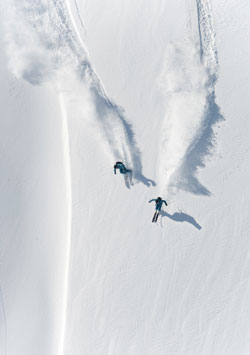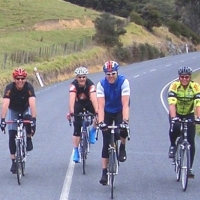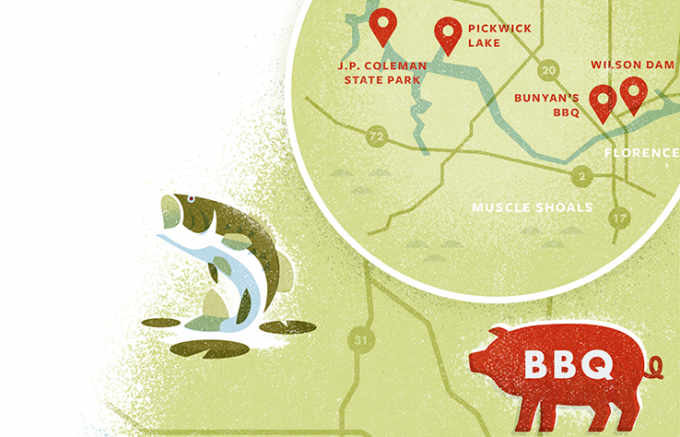stopping the draw - continued
Question
Reponces to your question. Sorry it took so long. -
First of all I don't know if duels is the correct termanology for this formation.
To us it means four WR (a split-end and slot receiver on each side) and a HB
behind center. The QB is under center or in shotgun.
1. We don't always adjust to the 4-3 against duels. We run the 4-3 when we
fell we need to defense the pass whatever the formation. We do move our
Sam LB (one of the inside LB) down to a DE position, but we replace our Will
LB (another of the inside LB's) with a DB who plays one of the deep safties.
2. The play does not hurt us in other formations because one of two outside
LB's will move in closer to the line to help the Mike LB. The play is called
anytime. We sometimes see the QB check to it at the line. I do think coaches
are just picking on us with the play. We break down tendencies of our
opponents before each game and they never run draw as much as they run it
against us. Plus opposing teams have not been able run the ball effectivily
with any other play against us. We stop toss, zone, jet, QB follow, trap and
dart very well out of that formation.
3. If we have a three man front they will base block the play (OT's on DE's, C
on N, OG's on LB's). In our four man front they trap with the uncovered OG
(the OG on the side of the N away from the DT)
4. To this point we haven't changed much. We just live with it and hope it's
not run too much in one drive. I think our Mike LB (our best defensive player)
gets too big of a pass drop and is easily pick off by the OL. Our two interior
DL also have a difficult time adjusting their pass rush to stop the draw.
Usually the Mike LB makes the play, but only after 5 to 10 yard gain. He does
a hell of a job just to make that play in my opinion. He is on a pass drop and
has to reverse field to come up for the draw against a OL who is moving
forward at a full speed. When they are in duels they are in a one back set.
5. We have tried running a cover three over the top against duels but we
never do defend the pass very well out of it. That is why we take our Will LB
out in the first place to sure up our pass defense. When we move the safety
up and play cover three we stop the draw very effectively, but the play is
rarely run against the defense. They wait until we play cover two to run it.
Personnel - The way we run our 3-5 is a little different. Our best athletes our
our two outside LB's. They are 6'1", strong, fast and are expected to slow
down edge running plays and pass defend well. Our Mike LB is our best LB
and is counted on to stop interior runs in the A's and B's. The N is big and
strong. He needs to keep OL of our Mike LB so he can flow and fill. Our
weakest players are our short C's and our Sam & Will LB's. Our Sam and Will
are big kids who can move but they just don't have they instincts on the feild
we'd like them to have. Next year are personal will be different but
characteristic of the players will be similar.
I coach in Minnesota. We are in the big school class and just lost a close
game in the section championship. We are done this year but looking
forward to next year.
Answer
Paul -
I want to start off by saying sorry it took a few days to get back to you. I really took my time with this one, making sure I read and thought about every aspect you wrote on.
The first thing I would like to say is just a general statement. This can be applied to every aspect of coaching football, or any other sport for that matter. But it really will be helpful in fixing this problem you have. Gene Stallings once told me something I never forgot, and would like to pass it on to you. He said "The trick to coaching is being able to look at yourself, and your team from the opposing coaches eyes." I spent years thinking about this, and have found it to be the most truthful statement I have heard in respects to coaching football.
SO that is the first part of figuring out a solution to this problem. Whether it is defending a draw, or anything else, the best way to approach a specific problem like this is to put yourself in the opposing coaches shoes. What does he see? Why would he see this? Then, figure out how to correct this.
I am sure you are asking yourself why I spent the first 3 paragraphs with this philosophical junk. Well, its because I found that you have answered a lot of the problem yourself by just spelling out the question! Take the issue of your Mike LB for example. He is responsible for A and B gaps, and should be making the plays on these draws. However, you said he has a bad habit of dropping into pass coverage too early and maybe too deep. There is your first answer. This off season, work with him on trusting his athletic ability, instincts, and knowledge of the game! He is your best athlete right? I guarantee that the offensive coaches playing against you are seeing THAT EXACT SAME THING on films. "Look at that ILB! HE is back in coverage before our QB is even halfway into his drop back"! Assure him that he WILL be able to get into coverage even if he waits a full second or two longer during the QBs drop.
I am glad you specified the formation terminology for me. And it will benefit you in this case, because to me, that is a run and shoot. Just happens to be the same offense I quarterbacked in high school, so I am familiar with its ins and outs. Be aware that in that offense, the O line is hard pressed to put good blocks on anyone due to it's lack of players. So they will try their best to make you commit to a rush and just get in your way, allowing the RB to choose his hole. BAsically, they take you were you want to go, and work around you! A great way to defend against this is to pull back the reigns of your DL a little when you suspect a draw is coming. Try a zone rush or something along those lines. Instrust them not to over-pursue the passer. Fill the gaps on the line of scrimmage, but do not get stuck in the backfield. This will also help defend screens as well.
Maybe your best choice as a rule would be to take that Mike LB, and allow him (as your best athlete) to play a man defense on the ball. Basically allow him to shadow the ball no matter what the coverage is. Yes this will leave a small gap in the middle of the field on certain plays, but will really help cut down the big play draws that are killing you. Especially versus the duals you speak of.
Another big one is to start covering the lineman man for man. This formation (duals)relies on a fear factor to work.."Oh no, they have 4 WRs, we have to spread out as well!" Don't!!!! Put 4, maybe 5 players on the LOS. Do not allow the lineman to chip and move to the second level. Instead of going to a 4-3, try a 5-1, with your 2 OLBs lining up as def. ends. This allows your Mike to be untouched while in pursuit of the RB. Remember, just because the OLBs are lined up on the LOS, doesnt mean they have to rush. They are there to take OL out of the play in this case, not make every tackle. Take a look at big time college and pros, you will see this done quite often - 1 LB behind the DL, and 2 on the LOS. It is very effective.
IF you have a quick OLB, try blitzing him directly off tackle, around that tackle. Allow him to blitz about 1-2 yards upfield, then run down the LOS to the ballcarrier. The duals (run and shoot) has a huge weakness to it, and that is it! It DOES NOT lend itself well to players coming AROUND the tackles instead of at or inside of them. Players tend to get into the mindset of "I have to meet the ball carrier in the hole". Try coming around the line and getting that same Rb from the side. This will make the O Line think, and will open other rush packages by making the Off. Coordinator adjust to an outside rush. The offensive line know that if they start spreading out too much, the gaps will be way too big to effectively block on pass plays.
Those are a few ideas I think will really help you out against this play that is haunting you. Remember to use your knowledge of football to your advantage. What is easy for an O lineman to do? What is difficult for an O lineman to do? If I were an O coordinator, what would prevent me from running this play? The ideas above are examples of this. It's nothing complicated or fancy, it just takes what I know and have experienced about football and football players, and puts that knowledge into action.
Best of luck with the off-season training. You seem to have a very good grasp on the game, which will no doubt show on the field. I am more than willing to assist you with anythimg else you may need, so feel free to write anytime.
Best wishes
Coach Perl
College Football...
Drills


